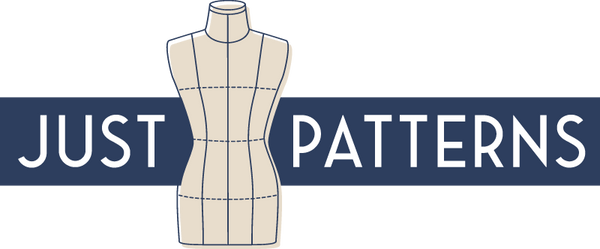
Design Integrity
For me, design integrity is about keeping the design consistent across different sizes and it’s something I care deeply about. If I can I will try not to add things like darts or to lengthen the skirt. I will also do my best to ensure necklines sit similarly (trickier than it sounds).
I find that some RTW brand efforts towards inclusivity carry an implication over what people with larger bodies want to/should wear and that’s not something I want to do. As sewists I feel like we have a lot of freedom when sewing a pattern so you get to decide if you want to sew it as is or if you want to show more or less skin than I intended.
The only exception I made to that rule is the Alek Rib Top because
- All testers of the second size range wanted more coverage and
- I couldn’t fit this particular design properly with the larger cup size.
Well that decision almost backfired badly on social media so whatever decision you make, be prepared to explain why.
Another point to consider is fabric consumption. When designing a pattern, think about how the design will affect fabric usage across all sizes. For my first size expansion, the Stephanie Skirt, I added seam lines to fit the fabric width after a certain size. Similarly, the waistband pieces of the Helena Wrap Dress had to be pieced together. Now this is something try to embed from the early design stages.

Moving from One Size Range to Another
Here are three ways to develop a second size range once the first is finalized:
-
Flat Drafting a New Pattern: Using a block specific to the new size range can provide a good fit from the start. The Muller and Sohn drafting books are great for this. This method works well for sleeve bodices and trousers but is time-consuming.
-
Grading Up: Grading the smaller size range up to the larger sample size retains style proportions and details such as pocket placements and style lines but often needs extensive refitting, especially in the upper body. It works best for skirts.
-
Draping on a Dress Form: Draping can seem obvious but is labor-intensive and requires a good plus-size dress form. It involves draping fabric on the form, transferring to paper, trueing all the lines, often sewing a new sample and digitizing it, which is not always efficient.

Fitting the Second Sample Size
Using a fit model vs. a dress form has its pros and cons. Ideally, we would do both but they are both pricey and not as easy to come by depending on where you are in the world.
When I first started the size extension I only relied on testers and I would not recommend that approach. Whichever of the 3 methods I highlighted above you used, it is unlikely the pattern is ready for testing at this stage.
Later, I used my mother as a fit model, but she was at the bottom of the second size range, which isn't ideal and I also moved to a different country so it was no longer an option.
The best investment I made for fitting and for my business in general was purchasing two Alvanon dress forms. They really upper my game in terms of consistency and reliability in fitting. I agonized over which ones to get for a long time and if it was really worth it and after a whole year of having them I can tell you: yes, it’s absolutely worth it. I got one for each size range from their Standard European Atelier line corresponding to the size 38 and 50 of my size chart.
The customer service is stellar but their are two things to take into account: 1/they are made to order and shipped from Hong Kong so it takes time to get them; and 2/ they are EXPENSIVE. They will give you a quote very quickly when you ask but brace yourself because air freight costs and custom duties are stiff. In my case, the total came about 5000 euros.

Grading and Testing
I already discussed grading a bit in my last post so I will add that testing is a key moment to check how your grading rules are performing. If the pattern looks good on the sizes closest to the sample drafting size and many issues appear in the extremes, it’s time to look at your rules!
Experimentation is really key here. I’ve regraded patterns based on tester feedback, making adjustments like fixing bicep fit across the range. Look out for shoulder length, inseam length, overall ease, and the proportions of details like pockets and buttons.
A quick note on finding testers for your extended range. This requires proactive efforts on your end, especially if you don’t cater to them currently. Posting on your usual channels might not get you the answers you are looking for. Try sewing forums and groups on Facebook and Reddit to find testers.
Final Thoughts
Don’t be afraid to jump into size expansion. The sewing community is incredibly supportive of inclusivity efforts, and it's possible to learn and improve as you go. If you have specific questions, feel free to reach out to me.
Happy drafting and sewing!
Delphine






1 comment
I see you continue to taunt me with my vest. What happened with the Alex rib top? Thanks for this very thoughtful post.